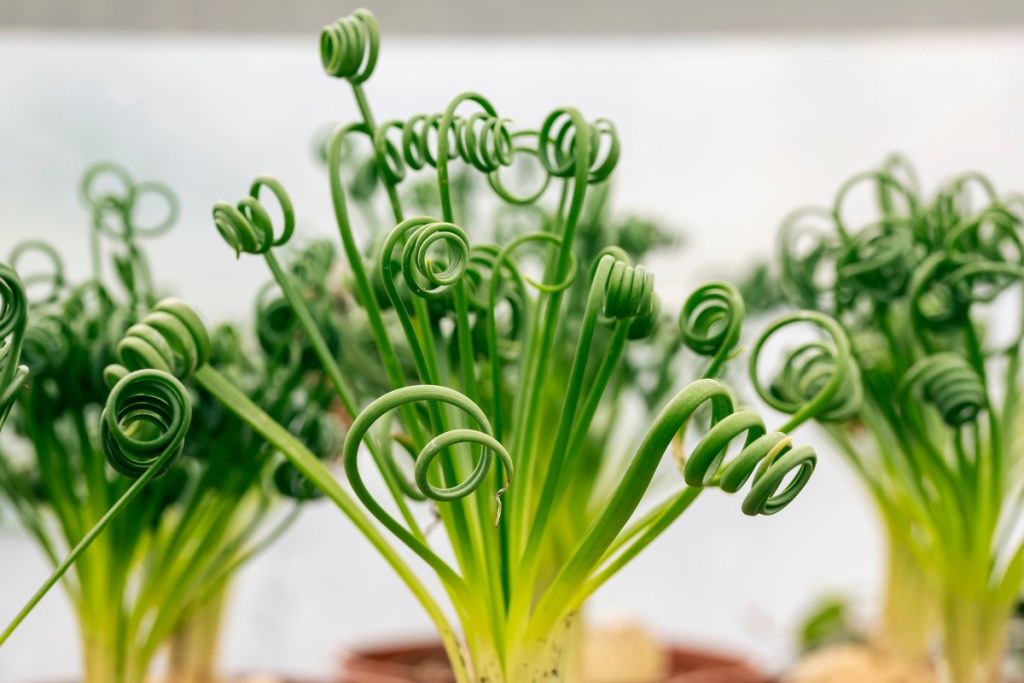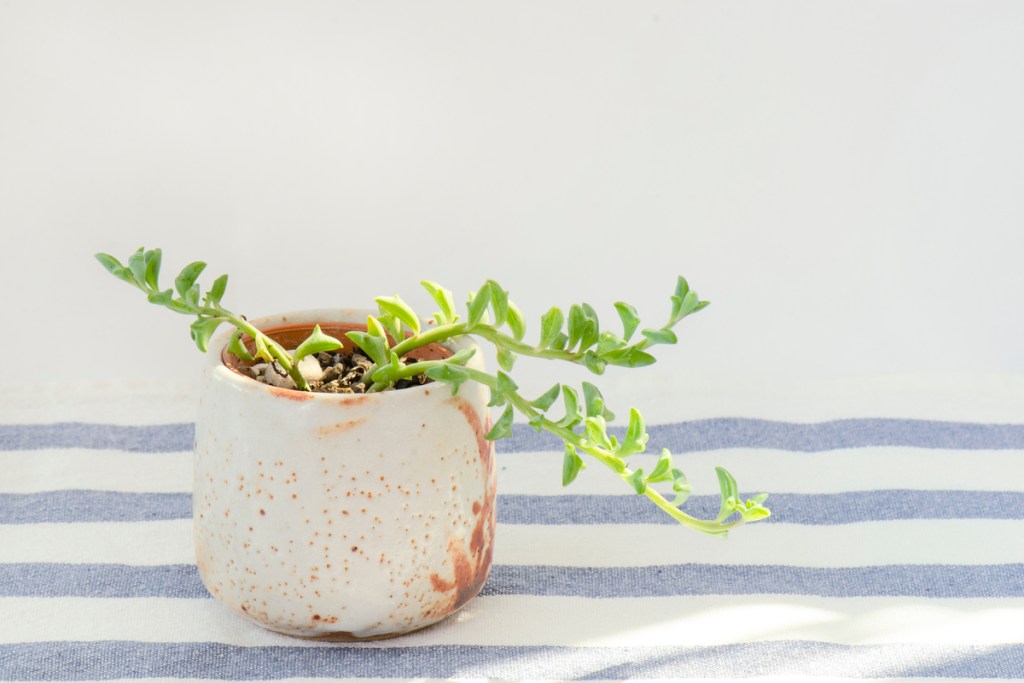While browsing the succulents at your local nursery, you’ll likely come across the typical golden barrels and jade plants. As you build your succulent garden over time, you might find yourself on the lookout for rarer varieties. These succulents might be tricky to find, but the good news is that most share similar care requirements with mainstream ones; they usually enjoy a well-draining cactus mix, love bright sunlight, and need little watering. From the mesmerizing mermaid tail succulent to the stunning string of dolphins, here are six unusual and beautiful succulents you may not be familiar with
Mermaid tail succulent
The gorgeous mermaid tail succulent, or senecio vitalis, is crested, which means that it stops producing branches and stems. Thus, it flattens out and leaves behind a distinct growth on top that resembles a mermaid tail. To keep this succulent happy, give it plenty of bright direct light and avoid overwatering it to prevent root rot — it’s actually highly resistant to drought. Native to the cape of South Africa, larger plants can grow between three to five feet wide and up to two feet tall.

Corkscrew albuca
The corkscrew albuca, or albuca spiralus, consists of green coiled spirals that emerge from an underground bulb — this South African succulent definitely adds a fun, whimsical look to any garden! During the spring, the plant can also yield beautiful yellow blooms that produce a sweet, vanilla scent. The flowers can sometimes cause the tips on the leaves to brown. If this bothers you, cut the flowers off before they’re spent. In terms of care requirements, keep the corkscrew albuca in loose, well-draining soil in full sun and allow it to dry out between waterings. In the winter, bring it indoors to protect it from frost.
Rose succulent
Cut roses are fleeting at best, but rose succulents will last forever — as long as you take care of them anyway! Hailing from the Canary Islands, the mountain rose, or greenovia dodrantalis, consists of foliage that tightly folds like a rose. These relatively rare succulents thrive in warm, sunny climates with low humidity and grow to about six inches high. One thing to keep in mind is that they’re not frost tolerant, so keep your plant indoors over the winter if you live in a growing zone lower than 10.
Trachyandra tortilis
Native to South Africa and Madagascar, this curly succulent is tricky to find, but it’s definitely a treat if you manage to track it down, flaunting thick clusters of ribbon-like leaves that can grow up to 15 centimeters long. The trachyandra tortillis is an easy succulent to maintain as long as you don’t overwater it — watering it once or twice a month should suffice. Keep it in an area that’s dry and warm but not hot. Occasionally, this plant also yields short-lived white flowers that last for a day, so be sure not to miss the blooms when they appear!
Bunny ear succulent
Bunny ear succulents, or Monilaria moniliformis, are the adorable succulents you might be seeing all over your Instagram feed. Native to South Africa, they grow in little clumps with a thick stem and two leaves that resemble bunny ears! They make perfect plants for spring and Easter, though you may have a hard time finding them. Most online sellers sell seeds instead of the actual plant. The care for the bunny ear succulent is relatively straightforward. With well-draining soil, proper ventilation, bright light, and light watering, your plant should be hopping with joy!

String of dolphins
In the wild, senecio peregrinus, or the string of dolphins, grows as ground cover. Indoors, this succulent makes for a beautiful hanging basket plant as well. As its conventional name implies, its notched, crescent beads make it look like a string of dolphins! It’s often kept as a houseplant but appreciates warm weather and bright light with some shade (full sun can scorch the leaves). Unlike many other succulents, it may need a little more watering than usual, though it generally dislikes sitting in water. Once it adapts to your home, its stems of unique leaves can trail down to three feet long.
Flaunt foliage shapes like no other by making a rare succulent the crown jewel in your houseplant collection! While these succulents might be hard to locate, they’re well worth the wait and effort. Sometimes, all it takes is a quick search on Etsy or a chance encounter at your nursery! And while their beautiful shapes may make them seem intimidating, remember that fundamentally, even most rare succulents are low maintenance — they’ll thrive with well-draining cactus mix, bright light, and warm temperatures.
Editors' Recommendations
- Stunning Monstera plants that you should add to your indoor plant collection
- Beyond basil and cilantro, add these unique plants to your indoor herb garden
- 5 easy-care spider plant varieties perfect for any home garden
- Easy hoya plants to add to your indoor plant collection
- Are these common houseplants safe for your cat? Read this guide to find out the scoop




